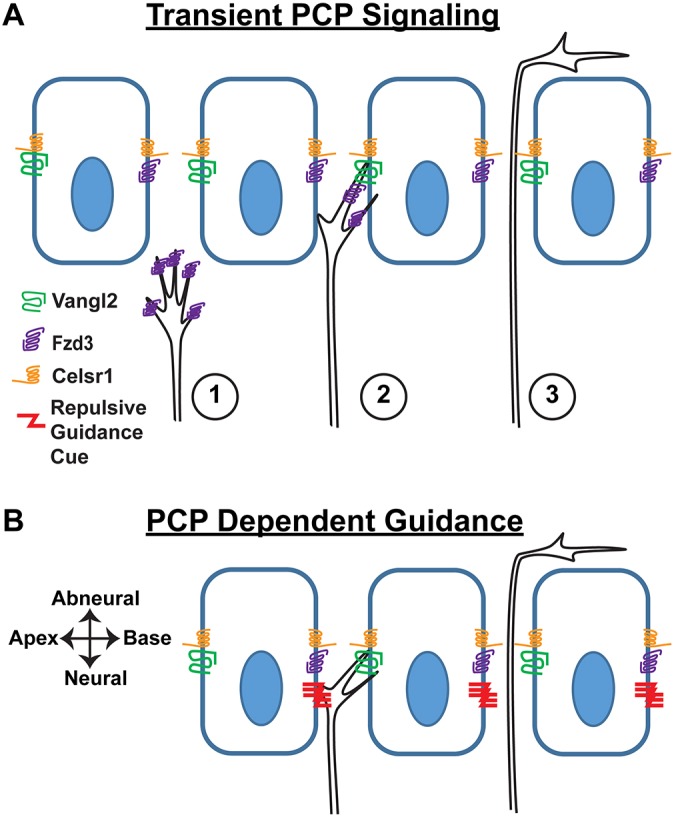Fig. 8.

Alternative models for the non-autonomous function of VANGL2 in cochlear innervation. (A) Transient PCP signaling between FZD3 in the type II SGN growth cone and asymmetrically distributed VANGL2 at the basolateral surface of IPCs influences growth cone dynamics such that extension of the peripheral axon is biased towards the cochlear base. In this model, the asymmetric enrichment of VANGL2 on the side of IPCs facing the cochlear apex stabilizes filopodial extensions on the side of the growth cone facing the cochlear base, thereby promoting axon turning in this direction. Numbering represents the sequential progression of transient PCP signaling. (B) Alternatively, classical axon guidance molecules (represented here by a repulsive cue) may be asymmetrically distributed at supporting cell boundaries through a PCP-dependent mechanism. Depending upon the mode of action and location, these molecules could direct growth cone turning towards the cochlear base.
